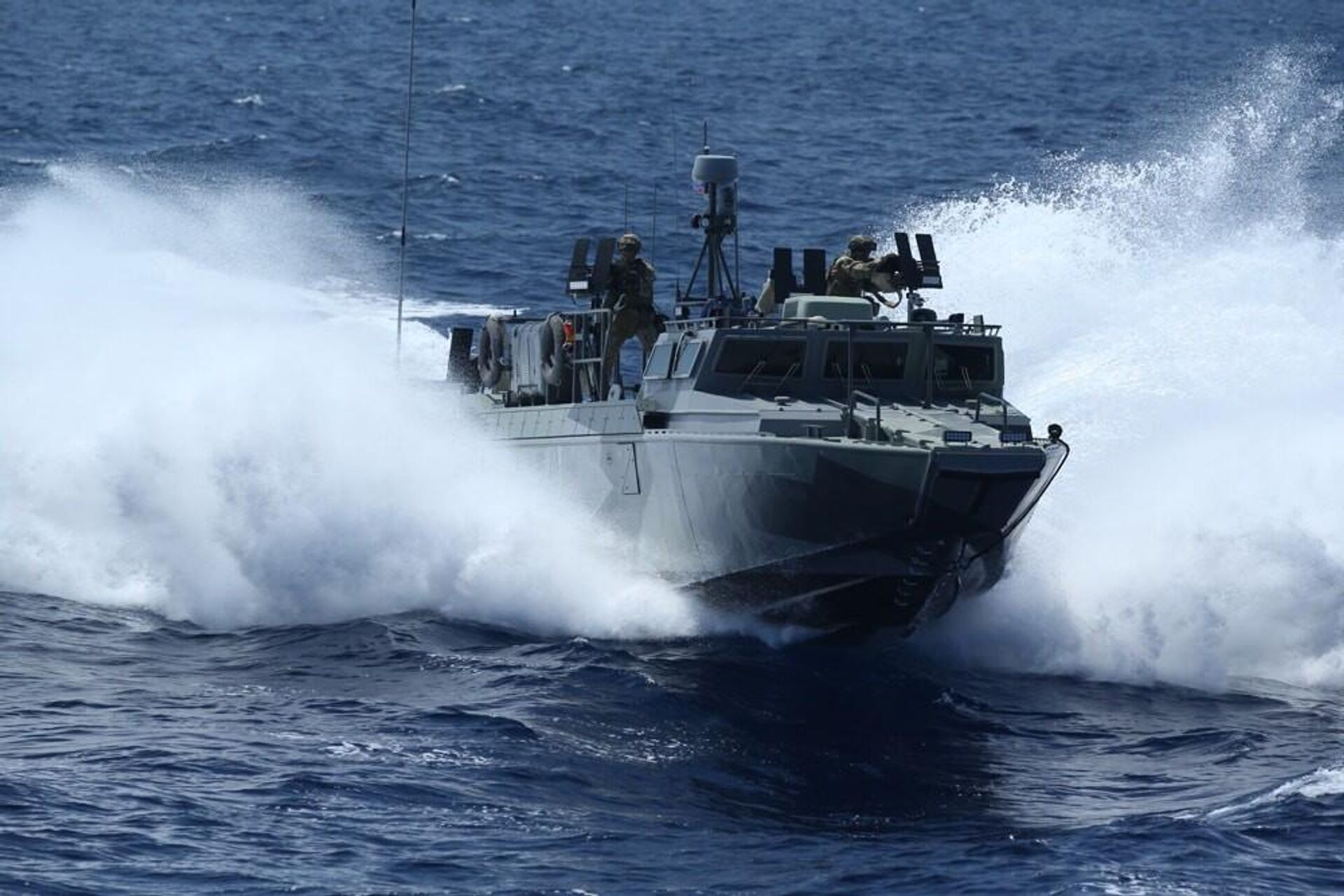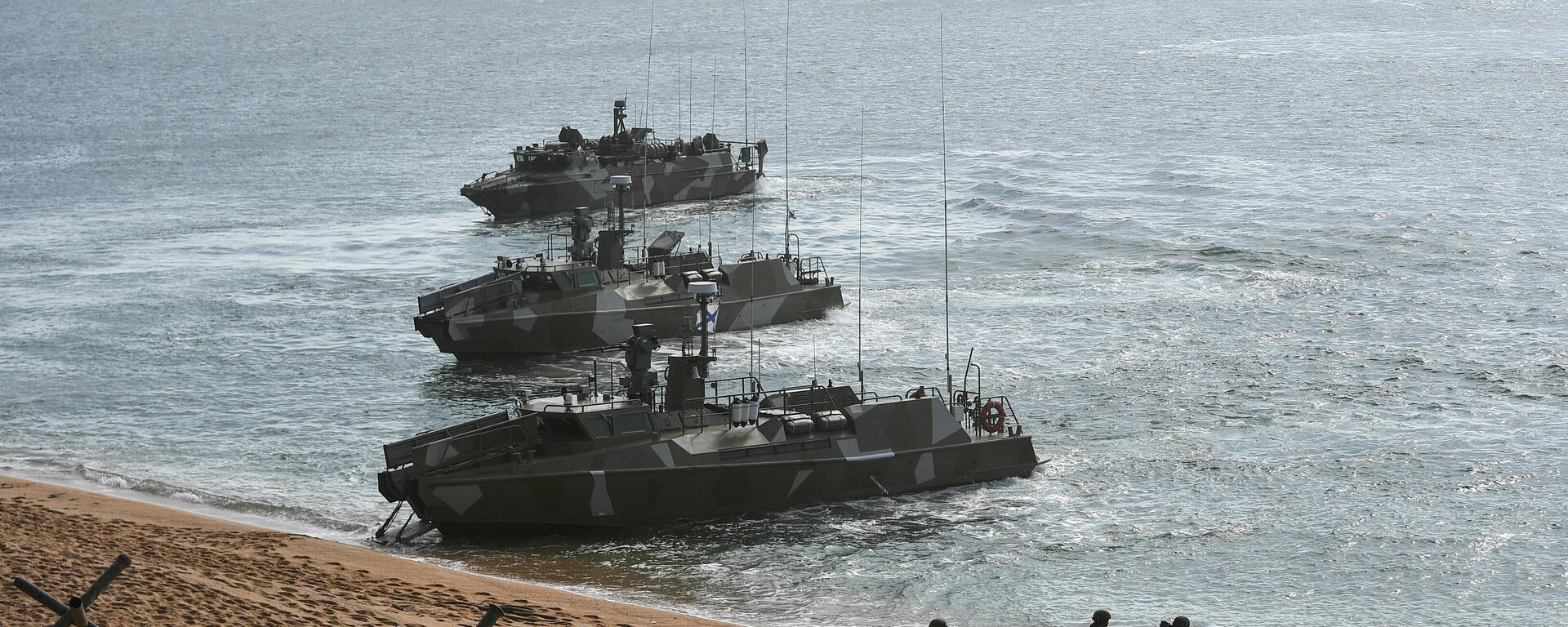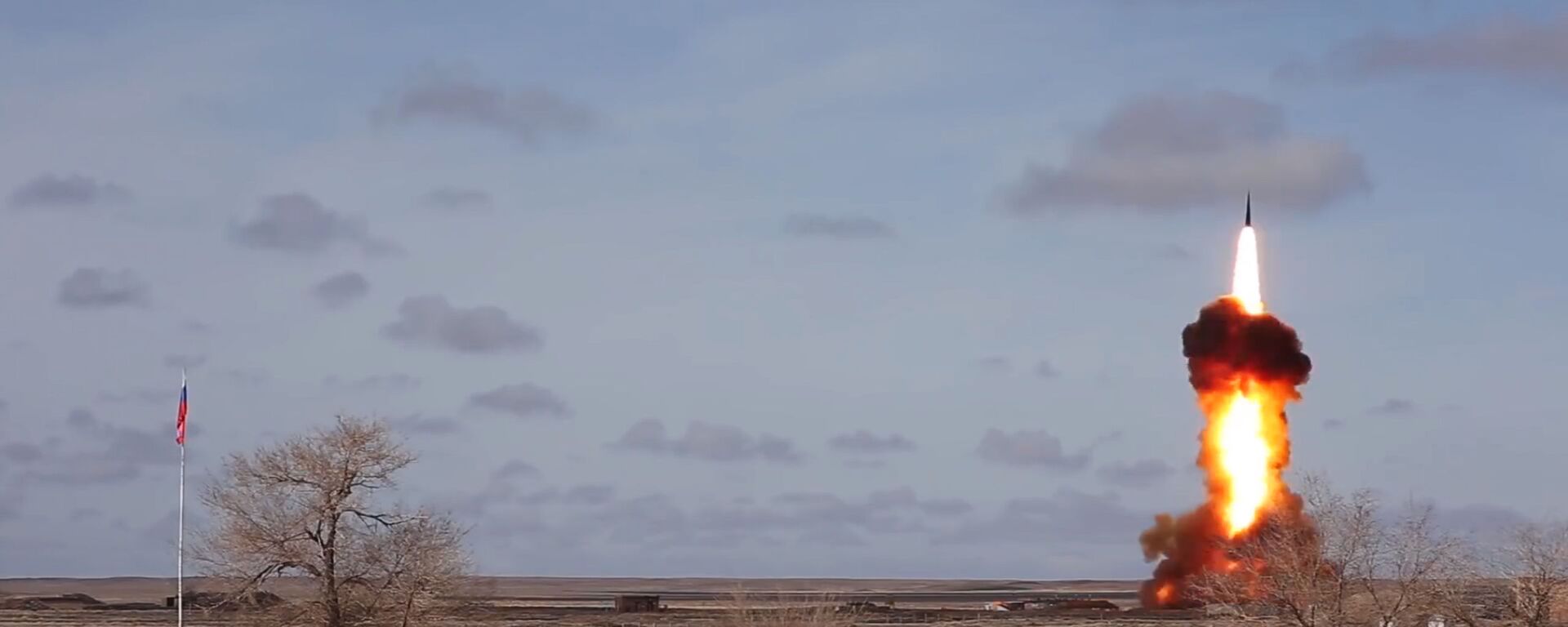Turning the Tide: Why Russia Resurrected the Dnepr Flotilla
15:32 GMT 21.03.2024 (Updated: 15:36 GMT 21.03.2024)

© Sputnik / Konstantin Mihalchevskiy
/ Subscribe
Russia’s defense minister has announced the formation of a new Dnepr River Flotilla and riverboat brigade as part of ongoing efforts to strengthen the combat capabilities of forces taking part in the conflict in Ukraine. What do we know about the new flotilla? What impact could it have in combat operations? Sputnik asked naval warfare specialists.
Small Russian naval vessels first began patrolling the waters of the vast Dnepr River basin in the 1720s, with fleets of small boats playing a major role in the Russo-Turkish wars of the 18th century, the Russian Civil War and the Great Patriotic War.
The first vessels of the flotilla, laid down on the orders of Czar Peter the Great, consisted of small, flat-bottomed boats known as strugs, dugout canoes and so-called Cossack boats, dozens of them built at shipyards in the ancient Russian city of Bryansk. Equipped with these vessels, Russian forces were able to rapidly traverse the mighty river southward, assisting ground-based forces in both defensive and offensive operations across area of more than 1,000 km, and ultimately helping to facilitate the annexation of the Crimean Khanate into the Russian Empire in 1783.
During the 20th century, Dnepr flotillas once again returned to play a decisive role in Russian and Soviet history, with Red Army, White Army and local warlords using them extensively for operations across what would become Soviet Ukraine between 1919 and 1920 during the course of a bloody Civil War. In 1943, during Soviet counteroffensives against Nazi Germany and its allies, the Dnepr Flotilla would be reconstituted, playing a major role in the liberation of Ukraine and Belorussia, engaging in troop transfers, performing amphibious landings, and defending against enemy counteroffensives and sabotage operations. Even after the front lines moved westward, Flotilla motor and gunboats continued to fight, with units from the Dnepr Flotilla taking part in the storming of Berlin and even the August 1945 lightning operation to liberate Manchuria from Japanese occupation.
Disbanded after WWII as the frontier between the USSR and its Eastern Bloc buffers and the Western Bloc moved over 1,500 km westward to the Elbe River, the Dnepr Flotilla laid dormant through the Cold War and the first decades of the ‘post-Cold War’ US unipolar moment, until Western intervention in Ukraine and the start of a full-on proxy war with NATO prompted Russia to reactivate it.
“An army corps, a motorized rifle division, a Dnepr River Flotilla and a brigade of river boats for the flotilla have been formed,” Defense Minister Shoigu said in a briefing on March 20, noting that the ongoing effort to strengthen forces’ combat capabilities is taking place “in accordance with the decision of the supreme commander-in-chief.”
What Kinds of Vessels Will the Flotilla Consist Of?
Shoigu did not share any details on the vessels or force structure of the new flotilla, leaving observers guessing what kinds of boats could operate on the Dnepr – which constitutes the line of contact across a vast section of the front in Kherson and Zaporozhye from the vast Kakhovka Reservoir to the mouth of the Black Sea.
During World War II, the Dnepr Flotilla consisted of about 140 gunboats, patrol boats, river minesweepers and motorboats of various sizes and displacements, including Project 1125 armored riverboats, which displaced 26-29 tons, were 22.65 meters long, 3.5 meters wide, had a cruising speed of 18 knots, and were crewed by 10-12 sailors.
Russia’s modern Navy has an array of patrol, minesweeper and amphibious lander vessels of a similar size and displacement, from the 43-ton Raptor-class and Project 1258 Korund-class minesweepers, which displace 91 tons, and new 22-ton BK-16 series high-speed transport-landers.

BK-16 High-speed assault combat boat.
© Photo : Kalashnikov Group
“I expect the flotilla to be armed with machine guns and cannons, and include unguided surface-to-surface missile launchers for operations against ground targets, as well as anti-aircraft missile systems for combatting air targets,” Alexander Bartosh, a corresponding member at Russia’s Academy of Military Science, and researcher at the Center for Military-Diplomatic Analysis and Assessments, told Sputnik.
“The Dnepr River Flotilla’s formation is connected with the need to strengthen our forces in the southwestern direction, where a complex situation remains in the context of the military operation in Ukraine,” Bartosh explained. “Furthermore, the speeding up of the creation of a new NATO base in Romania raises certain concerns and creates a difficult situation in the western part of the Black Sea and in the Dnepr River, as the most important large river flowing into the Black Sea,” the observer noted.
The military expert expects the flotilla’s mission to include foiling enemy landing, sabotage and reconnaissance operations and providing support to Russian ground forces, particularly in the battle against enemy drone formations. At the same time, Bartosh does not exclude the flotilla’s potential use for the deployment groups of Russian forces for special operations in the Ukrainian rear, the provision of fire support from the Dnepr’s shores, and the transfer of munitions and other supplies to units.
“This is a significant and important step aimed at strengthening our position in operations on waterways,” Bartosh emphasized.
An Idea Who’s Time Has Come?
The idea of creating a Dnepr River Flotilla to assure the security of Russian operations in the surrounding areas has been around since the spring of 2022, Dmitry Zhavoronkov, a military expert specializing in the Russian Navy and military shipbuilding, told Sputnik.
“In the spring of 2022, when Russian troops liberated Kherson and part of Zaporozhye region, the question of ensuring security in the Dnepr and its delta arose,” Zhavoronkov recalled. “This idea has been around since the very start of the special military operation, since in some areas the line of contact was along the river. An opinion exists that such a flotilla should have been created two years ago, even before the Ukrainian terrorist attack on the Khakovka hydroelectric station...So in my view, the decision is an absolutely correct one. The line of contact runs up along the Dnepr River right up to the outskirts of the city of Zaporozhye.”
The naval expert emphasized that the advanced state of drone warfare makes it absolutely vital for Russia to devote significant resources to the protection of any vessels making up the flotilla, and the creation of Russia’s own fleet of unmanned drone boats.
“Special attention should also be paid to various unmanned vessels, including unmanned boats and kamikaze attack vessels, relay boats, air defense boats and electronic warfare vessels,” Zhavoronkov said.






